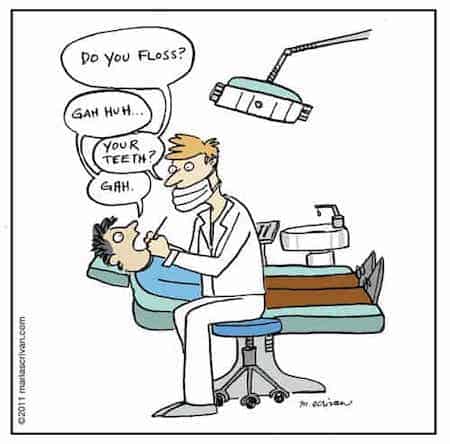A tooth filling is done for a tooth damaged by decay or cavities to make the tooth normal and functional.
What Steps Are Involved in Filling a Tooth?

- The dentist will examine your teeth and detect for the problems which need to be replaced with a tooth filling. To understand the depth of the infection, an X-ray may also be advised.
- Anaesthesia, if required, shall be administered.
- A dental handpiece will be used to drill to remove the decay.
- Once the decay is eliminated, cavity preparation shall be done to improve resistance and retention form.
- The final restoration is done.
- The composite material fills them and a bonding material is also used, so the filling bonds with the tooth. The composite filling material is added incrementally and cured.
- In the case of Glass Ionomer cement, the powder is folded gently into the liquid and placed immediately.
- In case of Amalgam, the liquid mercury is triturated with the alloy powder in a 1 to 1 weight ratio in amalgamator and the cavity is restored before amalgam sets.
- Typically, this procedure takes 15 – 30 minutes. However, it can take longer.
- Burs dental instrument may be used to finish and polish the filling.
What Types of Filling Materials Are Available?
Dental cement filling for you will be determined by the extent of the decay, allergies to certain filling material constituents, location of the filling, and the tooth filling cost. Considerations for filling materials include:
- Amalgam silver fillings are wear-resistant and have a lower tooth filling cost. However, due to their metallic color, they are unaesthetic. Thus, they are not used for restoring the front teeth. They are not allowed to put high compressive stresses but can fracture under high tension.
- Glass Ionomer fillings serve as luting agents, pit and fissure sealants, liner, base, core buildup and as restorative materials. They are tooth-colored, less strong, fluoride-releasing and less strong to tooth substance.
- Composite resins closely match the shade of teeth and provide a natural aesthetic appearance. Composites may not be an ideal solution for large fillings as they may chip or wear over time. However, they are very strong as they chemically bond to the tooth substance. Also, they allow more tooth conservation compared to amalgam fillings. However, composite tooth filling cost is on the higher end.
- Porcelain inlays or onlays are indirect restorations that are prepared in the dental laboratory after taking an impression and then fixed onto the tooth. They closely resemble the shade of the tooth and resist staining, unlike composite filling. A porcelain reformation usually covers most of the tooth substance. If damage or a fracture involves a greater part of the tooth structure, a crown/ cap may be advised. Decay that approaches or has become severe and reached to pulp nerve needs to be removed through root canal treatment (in which the damaged pulp is removed).
What to Expect After a Tooth Filling?
Sometimes, sensitivity or pain may be experienced after a tooth filling due to the following reasons:
- Acid is engraved before the composite filling, drilling, air pressure, sugar, coolant water jet, etc. that can act as an irritant and result in short term sensitivity, due to exposed dentin surfaces.
- The dentist must ensure that the tooth filling lines up with other teeth in the mouth. If the sensitivity symptoms continue, your dentist might take out the filling and put a new one. A base, liner agent may be added. However, if the restoration is very deep such that it reaches pulp, RCT (root canal treatment) is recommended.
How should I care for my teeth with fillings?
Immediately following tooth filling:
- Setting time of different tooth fillings varies and the type of care needed is different. Amalgam fillings can take up to 24 hours or more to attain its full strength. Composite and Ceramic fillings set immediately.
- Avoid food and beverages until the anesthetic wears off.
- Avoid very hot and cold foods and beverages as it can result in falling of the filling material. This can affect the filling bond strength.
- Avoid food, i.e. hard, chewy or sticky in consistency.
- Chew on the opposite side of the filling.
Aftercare:
- Maintain optimum oral hygiene by brushing and flossing, even after meals.
- Control your consumption of acidic and sugary foods and beverages.
- Get regular dental checkups and teeth cleaning.
How much does tooth filling cost?
The factors that influence tooth filling cost includes a type of material used, location of filling, skill and experience of dentists.
At Sabka Dentist, following are the various tooth filling costs:
For Adults:
| Composite Filling-Posterior | 900/- |
| Composite Filling-Anterior | 900/- |
| GIC filling | 600/- |
For Children:
| Pit and fissure sealants | 600/- |
| Topical Fluoride Application | 600/- |
| Composite Fillings | 800/- |
About the Author: Dr. Preethi Nagrajan pursued her BDS degree From Bharati Vidyapeeth, Pune. She is a successful dentist who graduated in 2009. She is not only an proficient dentist but has also done her MBA in healthcare and hospital management from Tamil Nadu University in 2013. She has also acquired a Diploma in Laser and Implant dentistry from LALD making her a specialist in Painless Laser Treatment, endodontics, oral surgery, prosthodontics, periodontology, FMR, and smile designing. Her experience and knowledge is vetted by numerous publications in various international journals. Dr. Preethi currently works as Dental Director at Sabka Dentist and has worked with the organization for over 8 years.
